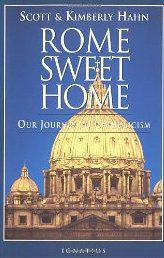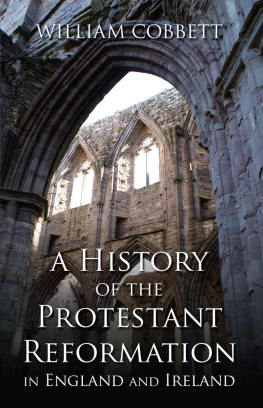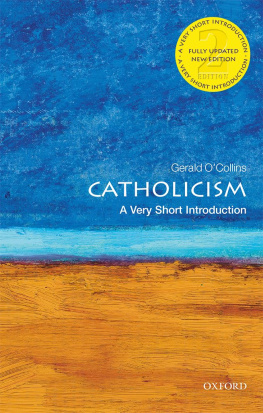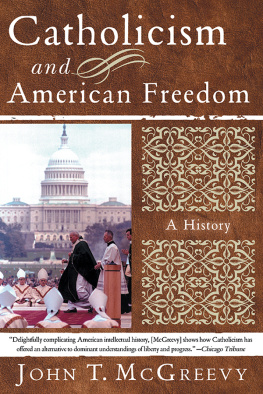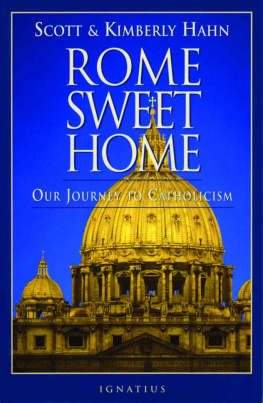Catholic Gentry in English Society
Coughton Court from the West, Coughton Court, The Throckmorton Collection (The National Trust), by John Hammond.
Catholic Gentry in English Society
The Throckmortons of Coughton from Reformation to Emancipation
Edited by
PETER MARSHALL AND GEOFFREY SCOTT
First published 2009 by Ashgate Publishing
Published 2016 by Routledge
2 Park Square, Milton Park, Abingdon, Oxon OX14 4RN
711 Third Avenue, New York, NY 10017, USA
Routledge is an imprint of the Taylor & Francis Group, an informa business
Copyright Peter Marshall, Geoffrey Scott and the contributors 2009
Peter Marshall and Geoffrey Scott have asserted their moral right under the Copyright, Designs and Patents Act, 1988, to be identified as the editors of this work.
All rights reserved. No part of this book may be reprinted or reproduced or utilised in any form or by any electronic, mechanical, or other means, now known or hereafter invented, including photocopying and recording, or in any information storage or retrieval system, without permission in writing from the publishers.
Notice:
Product or corporate names may be trademarks or registered trademarks, and are used only for identification and explanation without intent to infringe.
British Library Cataloguing in Publication Data
Catholic Gentry in English Society : the Throckmortons of Coughton from Reformation to Emancipation. (Catholic Christendom, 13001700)
1. Throckmorton (Family) 2. Throckmorton (Family) Political activity 3. Aristocracy (Social class) England Biography 4. Catholics England Political activity History 5. Religion and politics England History
I. Marshall, Peter II. Scott, Geoffrey
305.52088282
Library of Congress Cataloging-in-Publication Data
Catholic Gentry in English Society : Throckmortons of Coughton from Reformation to Emancipation / [edited by] Peter Marshall and Geoffrey Scott.
p. cm. (Catholic Christendom, 13001700)
Includes index.
ISBN 978-0-7546-6432-1 (hardcover : alk. paper) 1. Throckmorton family. 2. CatholicsEnglandBiography. 3. GentryEnglandBiography. 4. Coughton Court (England)Biography. 5. Coughton Court (England)History. 6. EnglandBiography. 7. EnglandSocial life and customs. 8. EnglandSocial conditions.
I. Marshall, Peter, 1964 II. Scott, Geoffrey, OSB.
CT787.T48M37 2008
941dc22
2008055070
ISBN 13: 978-0-7546-6432-1 (hbk)
Contents
Peter Marshall and Geoffrey Scott
Peter Marshall
Susan Cogan
Michael Hodgetts
Jan Broadway
Malcolm Wanklyn
Geoffrey Scott
Michael Mullett
Alban Hood
The still-usual emphasis on medieval (or Catholic) and reformation (or Protestant) religious history has meant neglect of the middle ground, both chronological and ideological. As a result, continuities between the middle ages and early modern Europe have been overlooked in favor of emphasis on radical discontinuities. Further, especially in the later period, the identification of reformation with various kinds of Protestantism means that the vitality and creativity of the established church, whether in its Roman or local manifestations, has been left out of account. In the last few years, an upsurge of interest in the history of traditional (or catholic) religion makes these inadequacies in received scholarship even more glaring and in need of systematic correction. The series will attempt this by covering all varieties of religious behavior, broadly interpreted, not just (or even especially) traditional institutional and doctrinal church history. It will to the maximum degree possible be interdisciplinary, comparative and global, as well as non-confessional. The goal is to understand religion, primarily of the Catholic variety, as a broadly human phenomenon, rather than as a privileged mode of access to superhuman realms, even implicitly.
The period covered, 13001700, embraces the moment which saw an almost complete transformation of the place of religion in the life of Europeans, whether considered as a system of beliefs, as an institution, or as a set of social and cultural practices. In 1300, vast numbers of Europeans, from the pope down, fully expected Jesuss return and the beginning of His reign on earth. By 1700, very few Europeans, of whatever level of education, would have subscribed to such chiliastic beliefs. Pierre Bayles notorious sarcasms about signs and portents are not idiosyncratic. Likewise, in 1300 the vast majority of Europeans probably regarded the pope as their spiritual head; the institution he headed was probably the most tightly integrated and effective bureaucracy in Europe. Most Europeans were at least nominally Christian, and the pope had at least nominal knowledge of that fact. The papacy, as an institution, played a central role in high politics, and the clergy in general formed an integral part of most governments, whether central or local. By 1700, Europe was divided into a myriad of different religious allegiances, and even those areas officially subordinate to the pope were both more nominally Catholic in belief (despite colossal efforts at imposing uniformity) and also in allegiance than they had been four hundred years earlier. The pope had become only one political factor, and not one of the first rank. The clergy, for its part, had virtually disappeared from secular governments as well as losing much of its local authority. The stage was set for the Enlightenment.
Thomas F. Mayer,
Augustana College
Frontispiece: Coughton Court from the West, Coughton Court, The Throckmorton Collection (The National Trust), by John Hammond.
.
.
.
.
.
.
.
.
.
.
.
.
.
.
.
Jan Broadway is technical director of the Centre for Editing Lives and Letters at Queen Mary, University of London. She is the author of No historie so meete: Gentry culture and the development of local history in Elizabethan and early Stuart England (2006) and is currently working on a biography of Sir William Dugdale (160586).
Susan Cogan is a doctoral candidate in history at the University of Colorado, Boulder, and is completing a thesis on patronage and clientage among Catholic families in the Midlands in the later sixteenth and seventeenth centuries.
Michael Hodgetts is editor of Midland Catholic History and of the publications of the Archdiocese of Birmingham Historical Commission. He was formerly editor of Recusant History and of the Records and Monographs series of the Catholic Record Society.
Alban Hood OSB is novice master at Douai Abbey and a member of the English Benedictine History Commission. He was awarded his doctorate in history from the University of Liverpool for a thesis on the English Benedictines in the early nineteenth century. He is a contributor to the ODNB and to various journals, including Recusant History.




